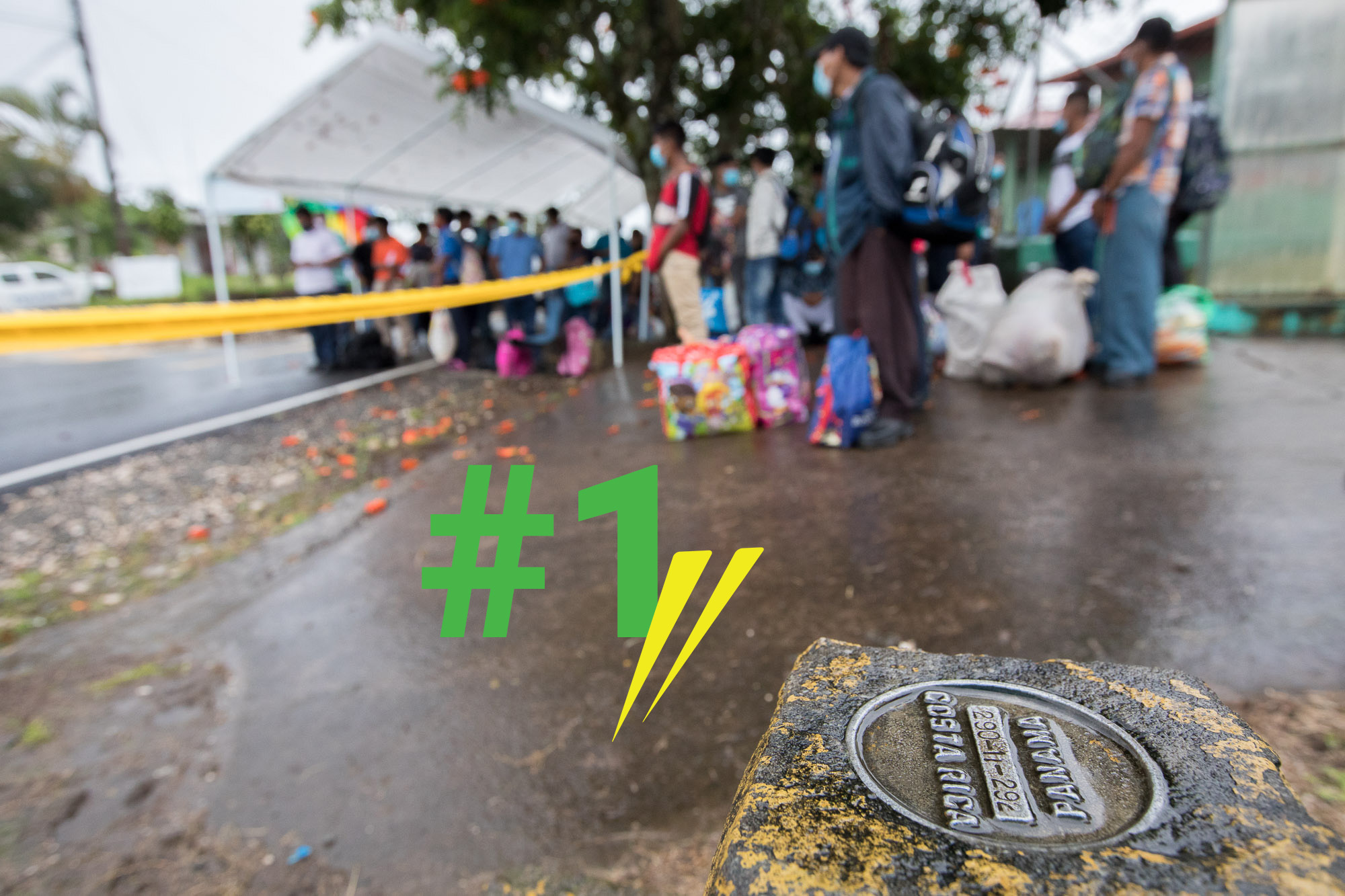
“Gracias a Dios, ya llegó Máximo.” Thank God. Máximo has arrived.
Minor Jiménez has had a long day. Last night, he set his alarm clock for 2 am so that he could wake up in his darkened home high in the mountains of Costa Rica’s most highly prized coffee-growing region, leave his sleeping wife and kids behind, and begin an unusual trip.
However, in the end, he couldn’t sleep a wink. He gave up and left his house in Tarrazú around midnight to make the journey to a place he’d never had cause to visit before: Costa Rica’s southern border with Panama.
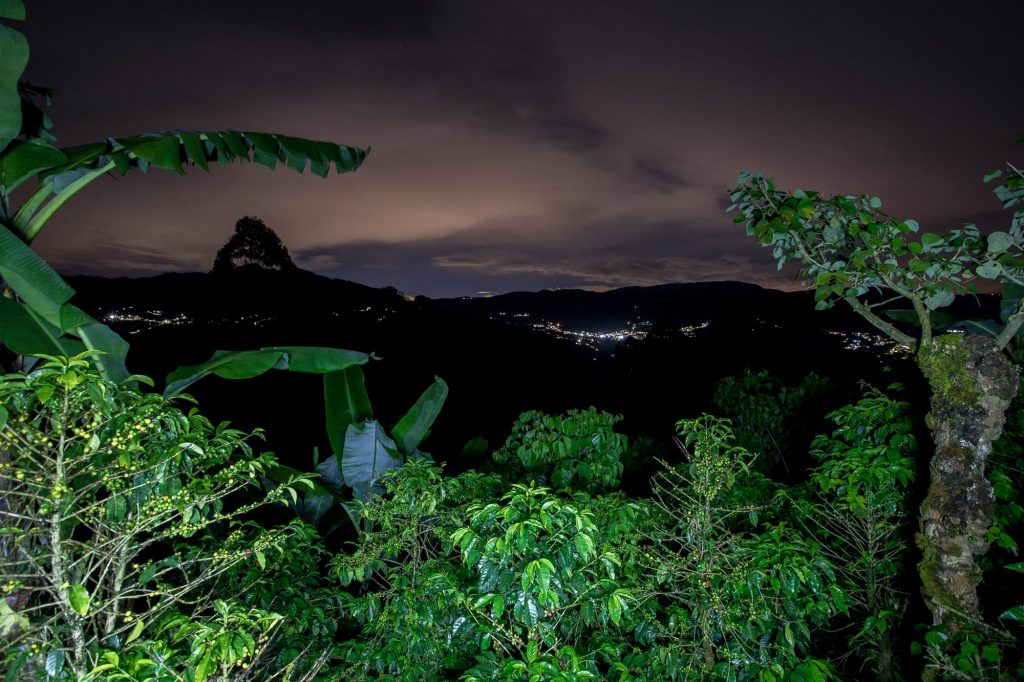
Wrestling his steering wheel as he bounced along the treacherous back roads that drop from Los Santos to the Costanera highway, which would take him south along the Pacific and then inland to the border station at Río Sereno, he just hoped that his workers would make it through—especially Máximo Palacios. He’s an indigenous Ngöbe-Buglé man who has worked for Minor for nearly ten years, ever since the coffee farmer got to know him through a mutual contact and picked him up in the town of San Marcos to work on his farm. The Palacios family and a wide circle of their relatives have come to know Minor’s steep mountain fields like the backs of their hands. They return to them year after year.
During a normal harvest, Minor, a fourth-generation coffee farmer, would simply wait for Máximo and his relatives to make their way into Costa Rica, onto a minibus, and up to the Jiménez family farm in Los Santos. There, the workers would spend three or four months picking some of the world’s best coffee.
But this is 2020, the year when a spiky virus from Wuhan changed everything. This year, the coffee migration has been made possible only by a rigorous set of protocols that have changed almost every aspect of what had been a commonplace process. This year, coffee farmers in Costa Rica must sign documents at the border so that immigration officials can verify that each and every coffee picker seeking to enter the country has a farmer lined up to assume responsibility for the worker’s transport, quarantine, proper housing, and health monitoring. This year, immigration flows that are usually invisible to most coffee farmers—with workers making their own way into the country or even hopping casually into a farmer’s truck, as Máximo once hopped into Minor’s—have been strictly regulated, forcing farmers to lay on private transportation for their workers and comply with a host of other regulations.
That’s how Minor came to set off for the border in the wee hours of October 21st. In many ways, it was a relief just to have a reason to go. Farmers up and down the country panicked when Costa Rica’s borders closed and it looked as though Panamanian and Nicaraguan workers, who make up the bulk of the country’s coffee picking workforce, might not be able to come at all. When regulations were put in place that would allow them to arrive, farmers who knew their workers began a long series of worried texts and phone calls. Would indigenous migrants overcome understandable fears of leaving their isolated territories and risking COVID-19 infection during the long journey? If so, when would they arrive? Would it be soon enough, and would they be numerous enough, to keep the country’s farms from going under?
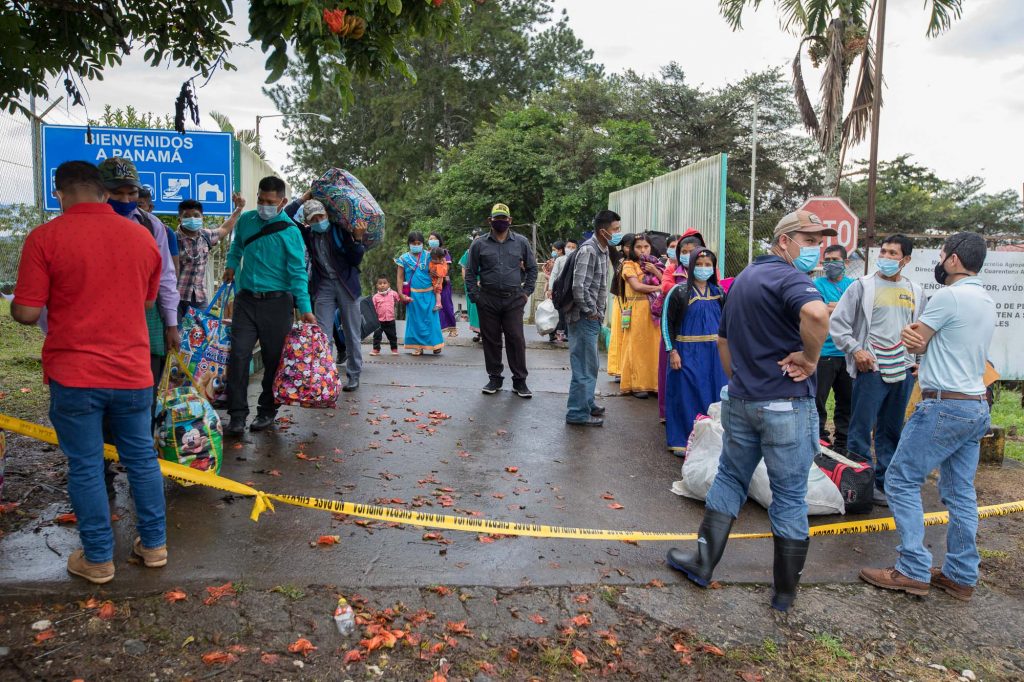
The border is full of these questions, with people of different walks of life looking for answers or trying to provide them. Nervous farmers, hoping to meet the workers on whom the harvest depends. Bus drivers who, often wielding power of attorney from the farmers they represent, play an unexpectedly critical role in the COVID-19 coffee migration. Indigenous “cultural advisors” who provide much-needed translation and support to Ngöbe-Buglé workers moving through the labyrinthine process. Public servants from at least five different government agencies, many of whom work 12-hour days to deal with the demands of running a border during a pandemic; others who clock out at quitting time, even if this means migrants still waiting in line will have to sleep outside the station. Cabinet ministers, vice-ministers or even UN agency officials who drop in and out, causing ripples that resonate through the system.
The global pandemic caused a country renowned for its coffee, but dependent on immigrants for the industry’s survival, to forge new, sometimes creative, often impromptu alliances and systems to keep the ship from running aground. To keep two jewels of this small Central American nation’s crown—its public health system, and its coffee industry – intact through one of the worst crises either has ever faced.
Each time a worker makes it through the final hurdle and connects with the farmer or bus driver who will take him or her to the final destination, one question, at least, is answered. It is the question that has raced through the minds of everyone in the coffee industry for months now.
Will they come?
The golden bean, a global crisis
In early July 1791, a ship called Nuestra Señora de los Angeles reached Costa Rican shores bearing two pounds of Arabica coffee from plantations in Martinique. This first recorded arrival of coffee to Costa Rican shores predated the commencement of coffee farming in the country’s central highlands by exactly 30 years—but once farming began, it took hold with a vengeance, aided by aggressive government policies to encourage cultivation of the promising crop. In 1821, according to a 1993 report by then-Costa Rican Coffee Institute president Guillermo Canet Brenes, the Municipality of San José began handing out coffee plants to residents; in 1831, the government promised land titles to anyone who grew coffee for five years on vacant land; and by 1845, production had skyrocketed to 4,500 hectares.
Coffee was the making of Costa Rica, a small country without significant natural resources. Today, 93,697 hectares of coffee nationwide produce nearly 2 million bushels, or fanegas, per year. Even the most casual visitors are plied with coffee samples, products, imagery and marketing at their hotels, restaurants, and right up until the boarding call at the airport. They’re thoroughly briefed on the importance of coffee in building “the happiest country in the world” and “Central America’s Switzerland.”
The image projected for them is of Costa Rican families picking coffee together and building a solid middle class thanks to the lack of large landowners. This is based on historical fact: the distribution of microlots did contribute to a robust middle class. Many small family farms, which make up the overwhelming majority of the country’s total, are still picked by relatives. (According to ICAFE, the Costa Rican Coffee Institute, 25,812 of the country’s 29,918 producers generate fewer than 100 bushels per year.)
Families like Minor’s did pick together. Like most coffee farmers, he has fond memories of picking coffee as a kid and as a teenager.
“I can’t remember a time when I didn’t pick coffee. I always had a basket there,” he says outside his home in Los Santos, gesturing to his waist, where the coffee basket would hang from a belt. “It’s a party.” He tells us of the day he and his cousin, distracted from their coffee picking duties, “nos agarramos a guayabazos,” hurling fallen guayaba fruits at each other. With one of them, Minor managed to break the mirror on his dad’s new truck, and spent the rest of the summer picking coffee to pay off the debt. “That stayed with me for the rest of my life,” he says with great seriousness.
The image of a fully domestic industry that is still portrayed to tourists, and to many Costa Ricans outside the coffee industry, is a vivid memory for people like Minor. However, it is also increasingly distant from a rapidly changing reality. Today, the industry depends heavily on migrant labor. Minor saw the change first-hand and remembers the first indigenous workers starting to arrive in Los Santos when he was six or seven. Today, according to ICAFE projections for the 2020-2021 season, a total of 74,374 coffee pickers will be employed at the peak of the 2020-2021 coffee season, with only 30% of that total corresponding to Costa Ricans, 43% from Nicaragua, and 26% from Panama.
The exact composition of migrant groups varies, of course, on the part of the country, with southern regions like Coto Brus and Los Santos relying more heavily on Panamanian labor. However, all of Costa Rica’s coffee-growing regions depend on migrant workforce. In general, only the smallest family farms use solely Costa Rican pickers.
That’s why, when COVID-19 descended on Costa Rica in March and the government’s swift response included closures of the land borders with Nicaragua to the north and Costa Rica to the south to all but Costa Rican citizens, Minor and thousands of his fellow farmers watched with immediate concern. That concern grew exponentially when, after an initial response that kept cases in check and earned international plaudits, Costa Rica’s situation began to worsen with a spate of outbreaks in the Northern Zone.
COVID-19 was spreading among the workers in fruit-packing plants. Mostly migrants. Mostly Nicaraguans. The government closed a number of plants altogether as it raced to trace and contain the outbreaks, as well as the anti-migrant sentiment that flared throughout a country where xenophobia towards Nicaraguans is already a difficult fact of life. This, despite the fact that social gatherings among Costa Ricans in San José were also a major reason that the government’s careful control over contact tracing was slipping away.
From there, Costa Rica’s pandemic prospects continued to worsen. As the rest of Costa Rica grappled with the consequences of this situation for health, the economy, education and more, coffee farmers just wanted to avoid the fruit companies’ fate. They had to find a solution before a harvest worth hundreds of millions of dollars fell to the ground to rot.
Strange bedfellows
With their eyes on the Northern Zone’s June outbreaks, farmers and authorities in Coto Brus—the country’s southernmost coffee region, population 40,000—sprang into action. Dr. Pablo Ortíz of the nonprofit Hands for Health explains that a “Comisión Cafetalera,” or Coffee-Growers’ Commission, united to deal with the crisis. This included local municipalities, farmers, ICAFE, the Costa Rican health-care system (la Caja), the International Organization for Migration (OIM), nonprofits such Hands for Health, and the ministries of Public Health, Agriculture, and Labor.
“When hundreds of pineapple plants were closed because of sick people, that caused panic among the coffee growers,” the doctor says, explaining how fear of COVID-19 transmission and coffee losses were confusingly intertwined. “There was, erroneously, the idea that indigenous people were going to bring the illness… They said, ‘The indigenous people will get us sick. And they’ll close the farms, and without the farms, there’s no money’… So the commission began to brainstorm.”
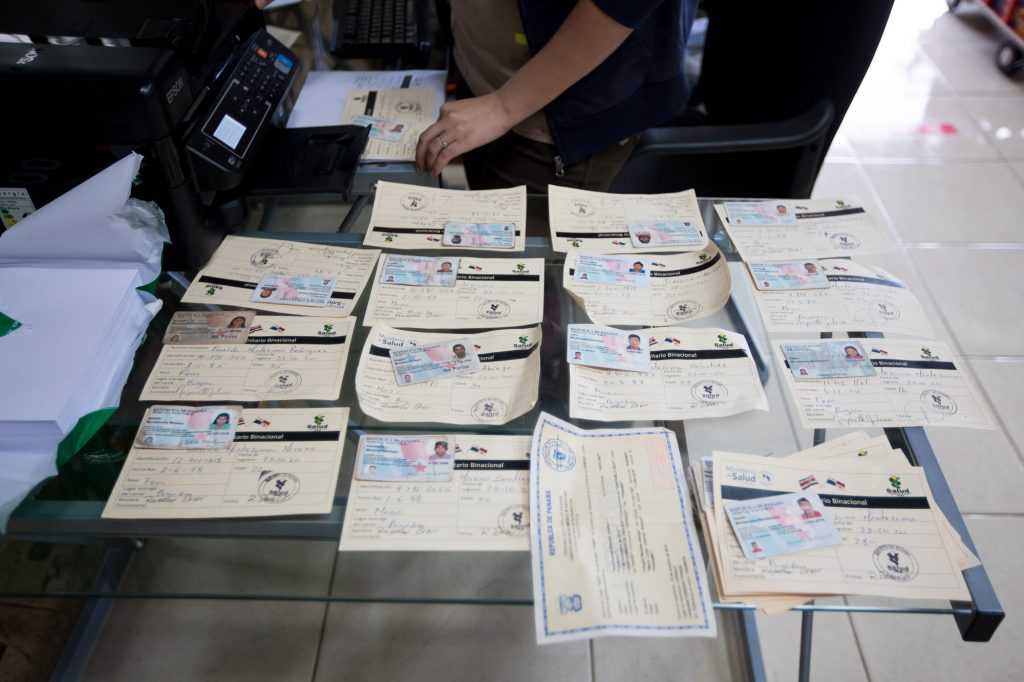
Out of this commission and related discussions with the government of Panama emerged the carnet binacional, a binational migration card that would verify migrants’ health status on the Panamanian side and then track them through the immigration process. In a departure from normal proceedings, it would also attempt to track their health through their entire Costa Rican stay.
In the past, “we’ve made the mistake of focusing on [cultural] issues… more than on ensuring that that migrants’ stay in Costa Rica is correct, health-wise,” says Dr. Christian Valverde, the Public Health Ministry’s Director of the Brunca Region that contains Coto Brus. “It’s not just giving them anti-parasite medication at the border, or a bag with soap and toothpaste. It’s making sure that wherever they’re going during their stay, sanitary regulations are being met. We need to make this migratory route as safe as possible from the health standpoint so that they return home in good condition.”
A full health protocol was developed. Farmers rushed to improve the condition of the workers’ dormitories, or baches, adding toilets or running water or electricity. Migrant advocates like Pablo Ortíz looked on with satisfaction on what they say has been much-delayed attention from some farmers to workers’ needs.
“We’ve been denouncing [these issues] for 30 years,” he says. “Costa Ricans have been like an ostrich: we haven’t wanted to see it. This population is invisible to us.”
Minor is quick to assert the importance of migrant workers, and Costa Rican society’s slowness to value them.
“It’s a symbiosis,” Minor will say later of the farmer-migrant relationship. He’s seated behind his home, overlooking one of Los Santos’s seemingly endless series of deep green valleys. “We help each other out, because that’s the only way… The intelligent producer takes care of the relationship. Better put: he cultivates it.”
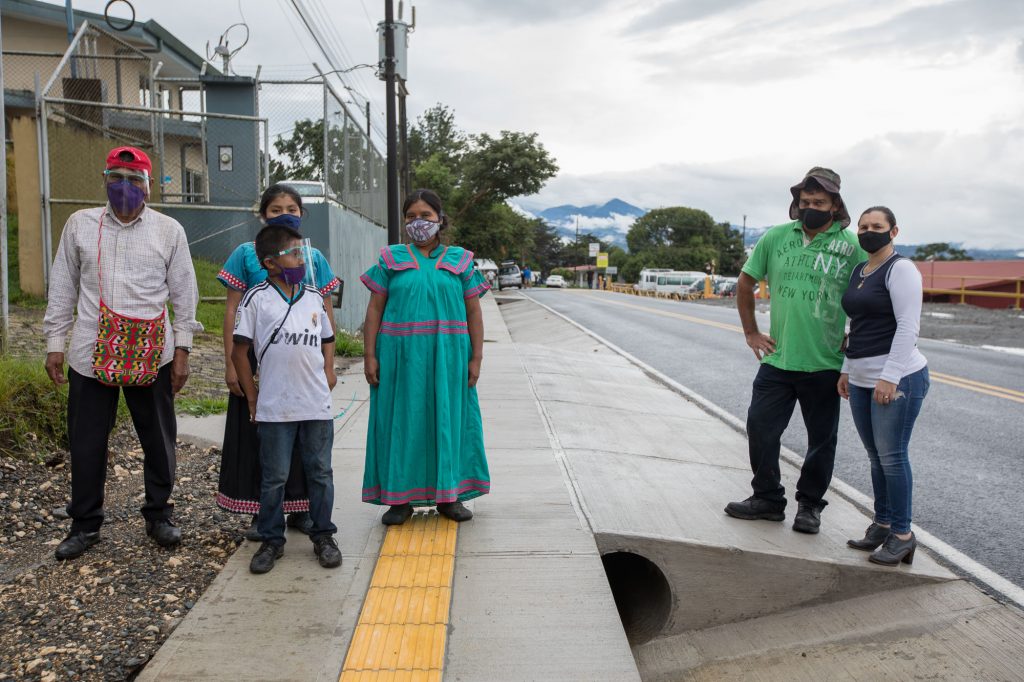
And so, in hopes that his long relationship with the Palacios family would help save his harvest, he set out for Río Sereno that October night. He thought he’d be meeting a group of 25 workers, enough to cover his farm during the granea when the crop is only partially ripe and requires careful picking so that the red coffee cherries don’t fall to the ground and rot. It would also be well towards the total of 40 workers he’d need at the height of the harvest, in December.
Things would not go as planned.
In the Costa Rican coffee industry in 2020, few things have.
Next in the series: A 48-hour journey, and the people who make the border work.
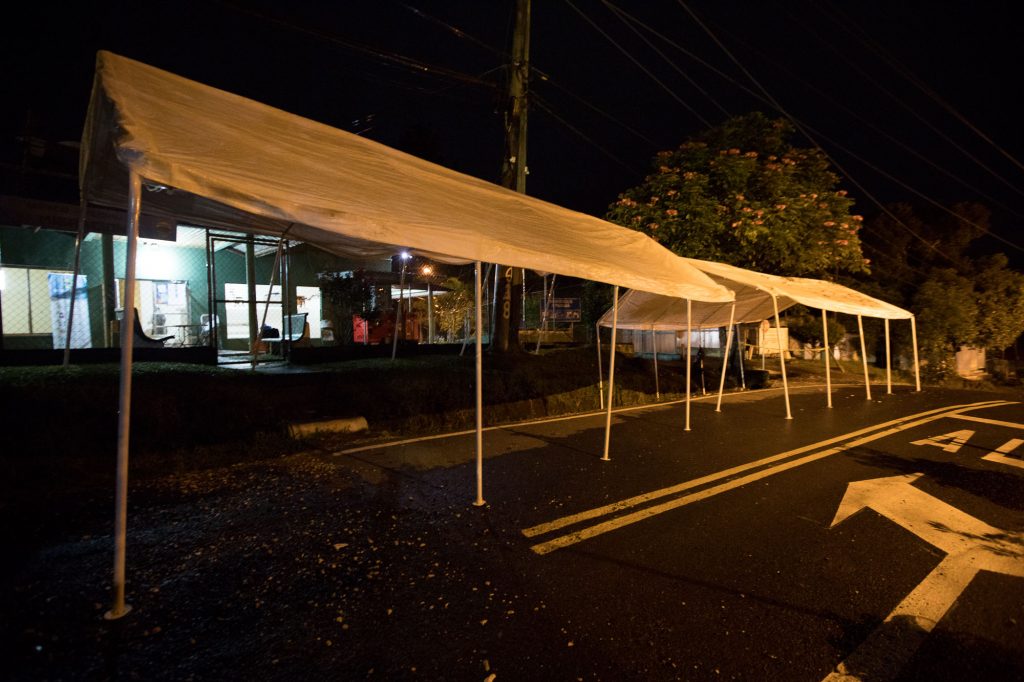
THANK YOU for reading the first-ever story from El Colectivo 506, a new, bilingual media organization from Costa Rica, for Costa Rica! We’re so grateful to the donors who made it possible for us to launch this new platform that’s journalist-owned, community-based and woman-powered. We invite you to check out what we’re about, how to subscribe or support our newsroom… and read our first travel and living stories! Stay tuned for Part II in this series on Tuesday, and our Costa Rica Daily Boost each morning at 8 am on Facebook, Instagram and Twitter (all @elcolectivo506) to start your day off right. Happy New Year!


